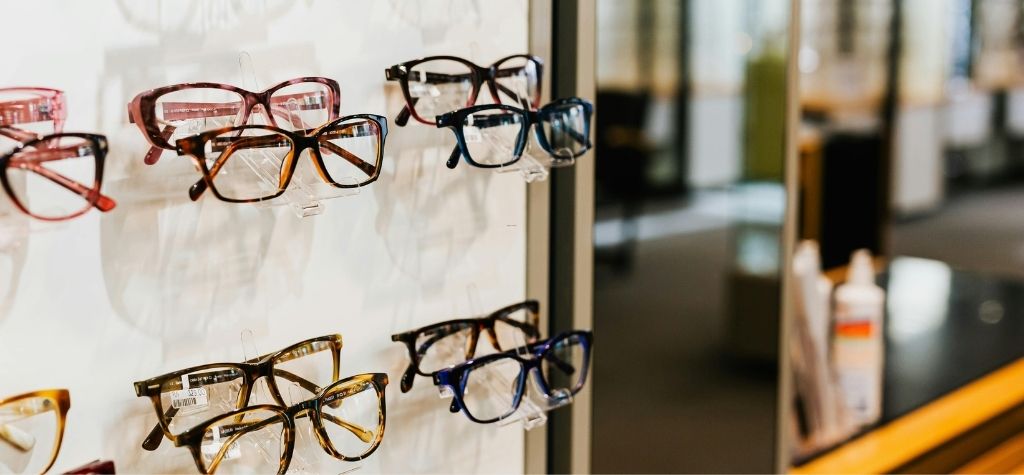Digital shopping has entered a new dimension with the rise of virtual try-on avatars. These advanced systems let users visualize eyewear styles on their own faces using augmented reality (AR), offering a hyper-realistic and interactive alternative to physical fittings. This shift isn’t just about fun—it’s transforming how we shop, increasing convenience while cutting costs.
With roots in gaming and social media filters, AR tech now powers platforms in fashion, beauty, and eyewear. The question on everyone’s mind: with digital options improving so fast, could real glasses become outdated by 2025?
How Try-On Avatars Work

Try-on avatars function by scanning a user’s face, creating a 3D model, and layering virtual glasses over it in real-time. These systems use:
- Facial landmark detection
- Augmented reality overlays
- Motion tracking and light simulation
Users can view themselves wearing hundreds of frames from every angle—blinking, tilting, or smiling—without stepping into a store.
The Technology Behind It
These avatars rely on cutting-edge innovations:
- AI algorithms tailor frame recommendations based on facial features and user preferences.
- AR engines like Apple ARKit and Google ARCore render glasses with real-time realism.
- Deep learning models help adjust frames based on head shape, lighting, and movement.
GPU acceleration and cloud computing ensure the experience is fast and fluid.
Growth of Virtual Eyewear Market
In 2025, the virtual eyewear market is thriving. Online retailers and eyewear brands have embraced AR try-on tools to drive engagement. Notable trends include:
- 40% boost in conversion rates for retailers using AR features.
- Surge in mobile-first eyewear apps, led by companies like Warby Parker and Lenskart.
- Increased demand for eco-friendly, try-before-you-buy options.
Digital eyewear is no longer experimental—it’s expected.
Benefits of Try-On Avatars for Consumers
Consumers love the experience because it offers:
- Ease of Access: Try glasses from anywhere.
- Instant Comparisons: Browse multiple styles effortlessly.
- Sustainability: Reduces carbon footprint from returns.
- Inclusive Options: Accessible for users in remote or rural areas.
This democratizes eyewear shopping, making it easier and smarter.
Advantages for Retailers and Brands

Businesses benefit as well:
- Fewer Returns: Customers make more confident decisions.
- Higher Engagement: Interactive tech increases dwell time.
- Customer Insights: Data from virtual try-ons informs design trends.
Retailers also save costs on shipping, restocking, and inventory management.
Limitations of Try-On Avatars
Despite their strengths, virtual try-ons can’t:
- Replicate lens thickness or frame weight.
- Accurately convey how glasses feel on the skin.
- Account for fit adjustments like nose pads or temple length.
Also, differences in screen resolution and lighting conditions may affect realism.
Consumer Trust and User Experience
Adoption is rising, but trust varies. While younger shoppers trust virtual try-ons, older users often prefer in-store experiences. Overall, platforms that offer smoother animations, sharper resolution, and intuitive controls receive higher satisfaction scores.
Consumer confidence is growing, especially as virtual try-ons consistently match real-world purchases.
Future of Eyewear Shopping Experience
The future is hybrid. In the next few years, we expect to see:
- Fully virtual showrooms with avatars powered by AI.
- Voice-activated shopping assistants integrated into eyewear apps.
- Augmented retail blending in-store and virtual fittings for ultimate convenience.
The goal: combine the tactile benefits of physical stores with the power of digital browsing.
Will Real Glasses Become Obsolete by 2025?
Not quite—but they are being redefined. Experts believe real glasses won’t disappear, but how we choose and purchase them will dramatically shift. The traditional showroom model may vanish, replaced by try-on avatars guiding purchases either online or in smart showrooms.
We may soon buy glasses entirely online, confident they’ll fit perfectly because we’ve already “tried” them.
Psychological and Social Impact
As virtual try-ons reshape our image of self, they also impact self-confidence and identity. Users are empowered to experiment with styles they’d never consider in-store. On the flip side, reliance on digital avatars could affect how we perceive ourselves offline.
Maintaining a balance between digital freedom and real-world acceptance is key.
Try-On Avatars Beyond Eyewear
Try-on avatars are not exclusive to glasses. They’re making waves in:
- Clothing
- Cosmetics
- Jewelry
- Footwear
Soon, entire wardrobes may be virtually testable before purchase, revolutionizing personal shopping across industries.
Ethical and Privacy Concerns

Virtual try-ons collect sensitive facial data. Without strong safeguards, this could lead to:
- Unwanted facial recognition
- Misuse of biometric data
- Unauthorized third-party access
Regulations must evolve to protect users, ensuring transparency and consent in data usage.
Regulatory Landscape
Governments are beginning to regulate AR and biometric tech. Laws like the GDPR and CCPA provide a foundation, but more eyewear-specific policies may emerge. Brands should be proactive about:
- Disclosing data practices
- Enabling opt-outs
- Securing facial data
Transparency builds trust—essential for long-term success.
Conclusion: A Glimpse into 2025
Try-on avatars are not replacing real glasses—they’re reshaping how we choose them. By 2025, most eyewear purchases will likely involve some digital interaction. As AR and AI mature, physical try-ons may become optional for many.
Still, for those who value the tactile feel of glasses, the option will remain. The future is not virtual-only—but it is virtual-first.
FAQs
1. Are virtual try-on glasses accurate?
They are very accurate for style and appearance but can’t replicate physical feel.
2. Is my data safe when using try-on avatars?
Reputable brands encrypt facial data and follow privacy laws, but always read the terms.
3. Can I buy prescription glasses with a virtual try-on?
Yes, many retailers let you upload your prescription after choosing your frames virtually.
4. Do try-on avatars work on all devices?
Most work on smartphones and laptops with cameras, but performance may vary by device.
5. Are try-on avatars only for glasses?
No, they are also used in fashion, makeup, and accessories like hats and earrings.
6. Will in-store eyewear shopping disappear?
Not entirely. It will likely become a secondary option or complement to digital experiences.

